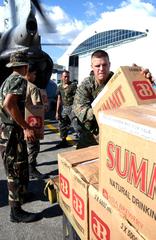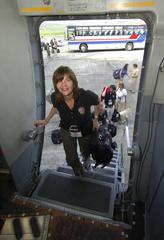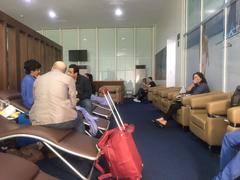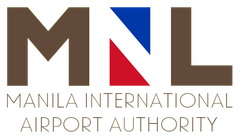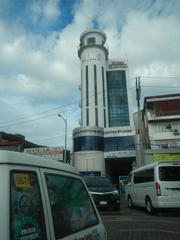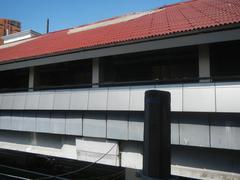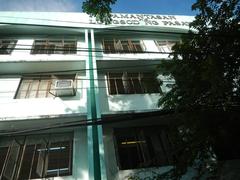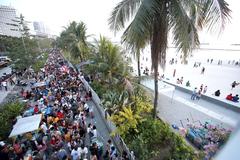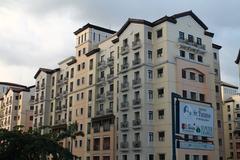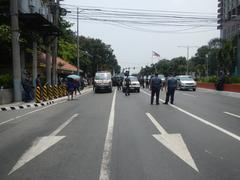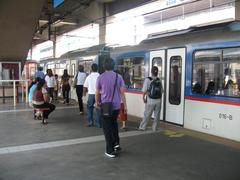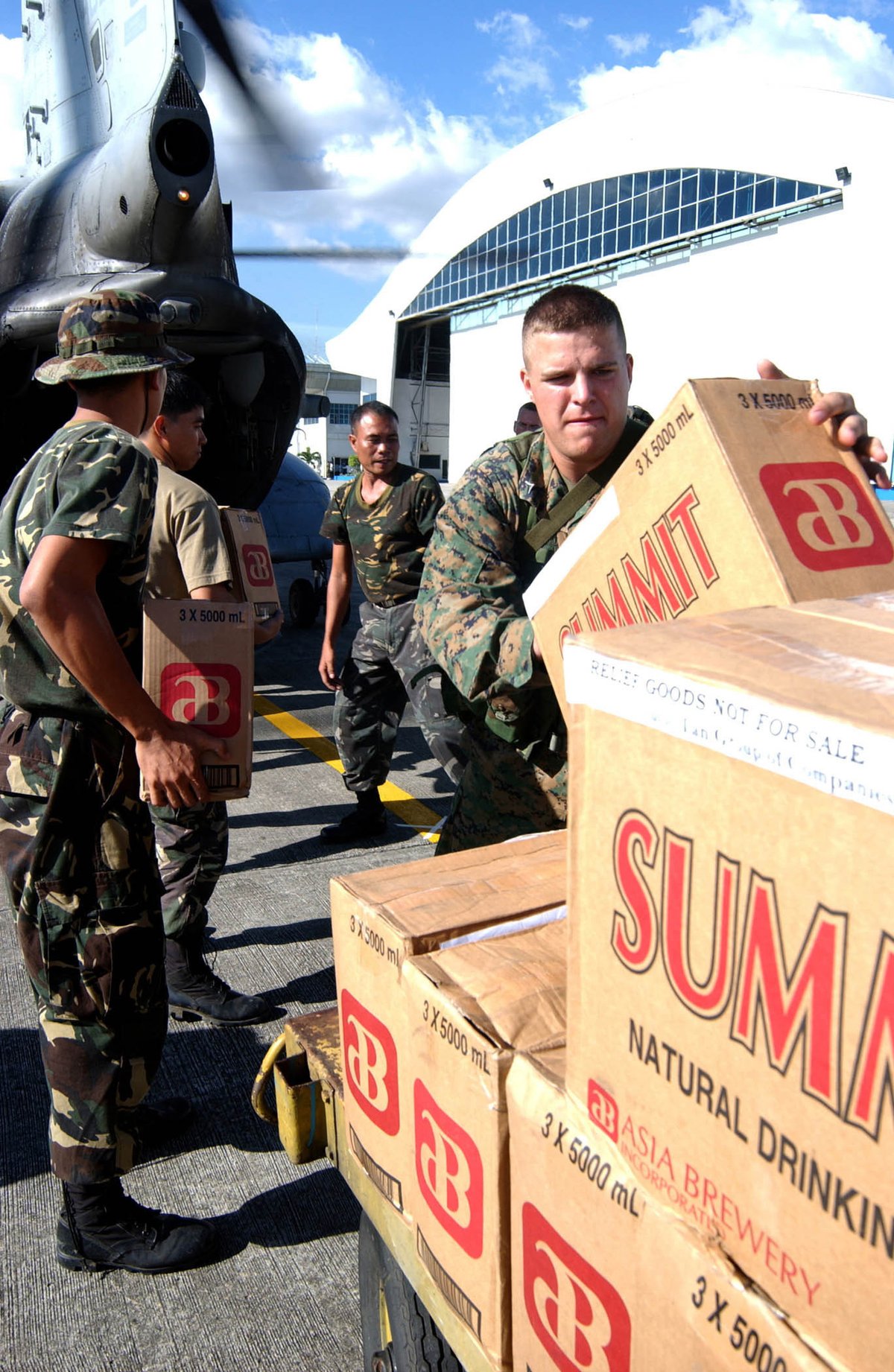
Ninoy Aquino International Airport Visiting Guide – Pasay, Philippines: Tickets, Hours, and Travel Tips
Date: 14/06/2025
Introduction
Ninoy Aquino International Airport (NAIA), located in Pasay City, Metro Manila, serves as the primary gateway for millions of domestic and international travelers each year. With a history reflecting the Philippines’ aviation evolution and pivotal political events, NAIA has transformed from post-war military airfields into a complex hub connecting the country to 89 cities across 29 countries as of 2025.
This guide offers an authoritative overview of NAIA’s history, terminal structures, visiting hours, ticketing procedures, security protocols, and essential travel tips. Practical advice is provided to help both first-time visitors and frequent flyers navigate the airport smoothly. Additionally, recommendations for nearby attractions and resources for real-time updates are included, ensuring an informed, efficient, and enriching travel experience (Wikipedia, MNL Airport Official, Wego Blog).
Contents
- Early Foundations of Philippine Aviation
- Wartime Role and Post-War Reconstruction
- Manila International Airport: Growth and Modernization
- Renaming and the Legacy of Ninoy Aquino
- NAIA Terminals and Facilities
- Visiting Hours and Ticketing Information
- Travel Tips for Visitors
- Nearby Attractions and Manila Historical Sites
- Photographic Spots and Guided Tours
- NAIA’s Role as a National and Regional Hub
- Challenges and Modernization Initiatives
- Frequently Asked Questions (FAQs)
- Conclusion
- Sources
Early Foundations of Philippine Aviation
NAIA’s roots are closely linked to the development of aviation in the Philippines. In 1935, Grace Park Airfield (Manila North) in Caloocan became the nation’s first commercial airport, serving as the base for what would become Philippine Airlines—the oldest airline in Asia to operate under its original name (Wikipedia, Simple Flying).
Nielson Airport, inaugurated in Makati in 1937, further advanced Manila’s status as an aviation hub. Its runways, now known as Ayala Avenue and Paseo de Roxas, remain as enduring symbols of early Philippine air travel (RichestPH).
Wartime Role and Post-War Reconstruction
During World War II, Manila’s airfields—precursors to NAIA—were heavily damaged, underscoring their strategic value (RichestPH). Post-war, Nielson Airport was decommissioned in 1948, and commercial operations shifted to Nichols Field, a former U.S. military base straddling Pasay and Parañaque. This site evolved into Manila International Airport, the direct predecessor of modern NAIA (Wikipedia).
Manila International Airport: Growth and Modernization
Nichols Field’s transformation into Manila International Airport marked a turning point for Philippine aviation. The airport’s first terminal (now Terminal 4) began commercial service in the late 1940s, initially supporting a single runway (MNL Airport Official).
The rapid rise in air travel throughout the 1950s and 1960s led to major expansions, positioning Manila International Airport as a regional hub in Southeast Asia (RichestPH).
Renaming and the Legacy of Ninoy Aquino
NAIA’s name honors Senator Benigno “Ninoy” Aquino Jr., who was assassinated on its tarmac on August 21, 1983. The renaming in 1987 transformed the airport into a national landmark symbolizing the Philippines’ democratic aspirations (Manila Airport Guide, Manila-Airport.net). NAIA thus stands not only as a travel hub but also as a site of historical and political significance.
NAIA Terminals and Facilities
NAIA comprises four terminals, each with distinct roles and amenities:
- Terminal 1: Opened in 1981, serving most international airlines. Designed by National Artist Leandro Locsin, it features duty-free shops, lounges, and immigration/customs facilities (Wego Blog).
- Terminal 2: Known as the Centennial Terminal, serves Philippine Airlines’ domestic and international flights. Features modern design, separate North/South Wings, and comprehensive check-in and baggage facilities.
- Terminal 3: The largest terminal, handling a mix of international and domestic flights. It offers direct access to Newport Mall, The Wings Transit Lounge, multiple dining/retail options, and abundant seating and charging stations.
- Terminal 4: The oldest and smallest, traditionally handling domestic flights for smaller carriers. Temporarily closed for renovation as of mid-2025.
Terminals are not connected by pedestrian walkways; passengers transfer via shuttle buses, taxis, or ride-hailing services.
Visiting Hours and Ticketing Information
- Operating Hours: All terminals operate 24/7 to accommodate international and domestic schedules. Security checkpoints generally function from 4:00 AM to 1:00 AM. Terminal 4 is closed for renovations until later in 2025.
- Ticketing: Tickets are purchased via airline websites, travel agencies, or authorized online platforms. Terminal fees are typically included in ticket prices.
- Arrival Times: International passengers should arrive at least 3–4 hours before departure; domestic passengers, at least 2–3 hours early.
Entry is restricted to ticketed passengers for security reasons. Non-passengers can access limited public areas, such as arrival lobbies, but should check with airlines for guest access policies.
Travel Tips for Visitors
- Transportation: Located about 7 km south of Manila, NAIA is accessible by taxi, ride-sharing, airport shuttle, or public bus. Account for heavy traffic during peak hours.
- Security: Expect comprehensive security checks. Keep identification and boarding passes ready.
- Facilities: Free Wi-Fi, currency exchange, ATMs, medical clinics, and a variety of food/retail outlets are available.
- Accessibility: Elevators, ramps, and assistance for persons with disabilities are provided. Request special assistance in advance through your airline or at terminal help desks.
- Cash: Many establishments are cash-only; ATMs are available throughout the terminals.
- Terminal Transfers: Use official shuttle buses, taxis, or ride-hailing apps for inter-terminal transfers. Allow 10–30 minutes depending on traffic and time of day.
Nearby Attractions and Manila Historical Sites
With extra time, explore these accessible sites:
- Intramuros: Historic walled city offering museums, churches, and colonial architecture.
- Rizal Park: National monument and park honoring José Rizal.
- Cultural Center of the Philippines: Premier venue for Filipino arts.
- Ayala Museum: A showcase of Filipino culture and history in nearby Makati.
All are accessible by taxi or public transport from NAIA.
Photographic Spots and Guided Tours
- Photo Opportunities: Observation decks and lounges, especially in Terminals 1 and 3, offer great views of airport activities.
- Tours: While NAIA doesn’t offer official guided tours, local aviation enthusiast groups occasionally organize informal tours—check relevant forums and social media for details.
NAIA’s Role as a National and Regional Hub
NAIA is the main hub for Philippine Airlines, PAL Express, AirSWIFT, Cebgo, Cebu Pacific, and Philippines AirAsia (Wikipedia). As of June 2025, it links Metro Manila to 89 cities in 29 countries (MNL Airport Official), serving as a critical center for business and tourism.
Challenges and Modernization Initiatives
NAIA faces ongoing challenges of congestion and infrastructure limits; its design capacity of 35 million annual passengers has been exceeded for several years (Wikipedia). In September 2024, management was transferred to New NAIA Infra Corp. (NNIC), resulting in operational improvements (Philstar). Projects like the New Manila International Airport in Bulacan and Sangley Point upgrades are underway to ease congestion and modernize airport facilities.
Frequently Asked Questions (FAQs)
Q: What are NAIA’s visiting hours?
A: All terminals operate 24/7, though security checkpoints and some services follow specific hours.
Q: Can non-ticketed visitors enter terminals?
A: Access is generally limited to ticketed passengers. Public areas such as arrival lobbies may be open to visitors; check with your airline.
Q: How do I purchase tickets for flights at NAIA?
A: Buy directly from airline websites, travel agencies, or authorized online platforms.
Q: Are there accommodations for travelers with disabilities?
A: Yes, all terminals offer ramps, elevators, and assistance services; request help in advance.
Q: What are popular nearby attractions?
A: Intramuros, Rizal Park, Cultural Center of the Philippines, and Ayala Museum are accessible from NAIA.
Security, Customs, and Immigration Essentials
- Security: Enhanced systems now place final security screening before immigration at Terminals 1 and 3, reducing bottlenecks (Philstar). Prohibited items include sharp objects, flammable materials, and carry-on liquids over 100ml.
- Customs: Complete a declaration form upon arrival; duty-free allowances apply to personal effects, with restrictions on certain goods (e.g., drugs, firearms, and specific agricultural products).
- Immigration: Prepare your passport, boarding pass, appropriate visas, and—for OFWs—an Overseas Employment Certificate. Complete the eTravel form online before arrival or departure.
Practical Traveler Tips
- Arrive Early: Allow extra time for check-in, security, and potential inter-terminal transfers.
- Stay Informed: Use the NAIA app and official websites for real-time updates on flights and terminal services.
- Connectivity: Free Wi-Fi is available in all terminals.
- Exchange Currency: ATMs and currency exchange booths are abundant.
- Transport: Shuttle buses connect terminals; taxis and ride-hailing services are available 24/7.
Visual Resources and Maps
For detailed terminal layouts and virtual tours, visit:
Conclusion
Ninoy Aquino International Airport is both a symbol of the Philippines’ rich aviation heritage and a vital regional gateway. With four specialized terminals, a full spectrum of amenities, and ongoing modernization, NAIA provides comprehensive facilities for travelers while addressing challenges of congestion and infrastructure. By leveraging official resources, planning ahead, and exploring Manila’s historical and cultural sites, visitors can ensure a smooth, safe, and memorable airport experience.
For continuous updates, flight schedules, and travel tips, download the official NAIA app and consult airport communications. Embrace your journey through Manila’s premier airport with confidence and knowledge (Philstar, Wikipedia, Manila-Airport.net).
Sources
- Ninoy Aquino International Airport (NAIA) – Wikipedia
- Manila Airport Guide – Wego Blog
- Better NAIA – Philstar
- The Evolution of Philippine Airports – RichestPH
- Manila-Airport.net
- MNL Airport Official
- Official NAIA website
- iFly Interactive Terminal Map
- Chill and Travel NAIA Guide
